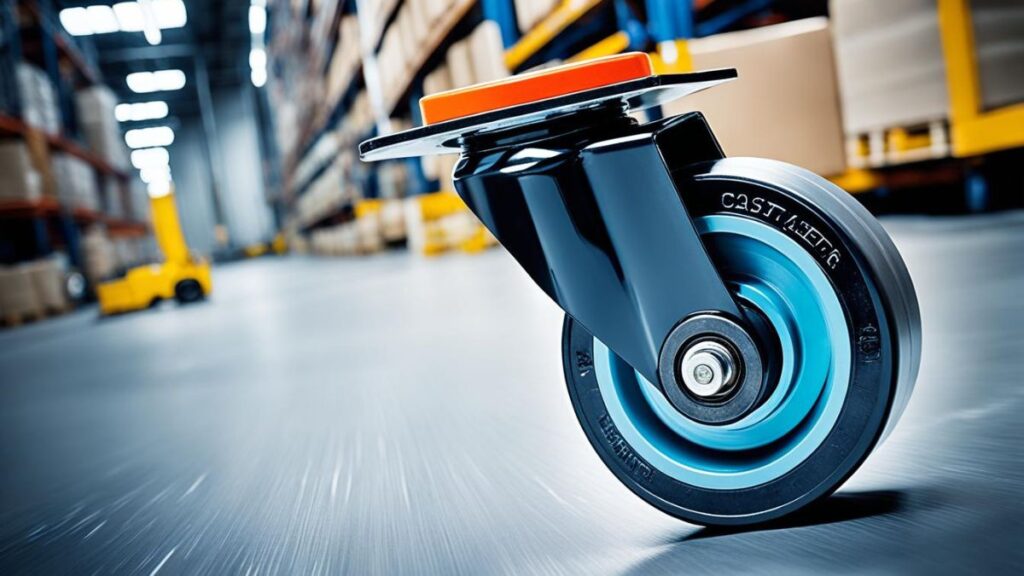Introduction to Casters
Casters are essential yet often overlooked components in various industries. They enable smooth movement and operational efficiency in factories, hospitals, and warehouses. They transform immobile equipment into easily maneuverable assets. Specialized solutions like leveling casters stabilize uneven surfaces, enhancing safety and balance in dynamic work environments. Despite their small size, casters significantly boost productivity. They are vital for transitioning heavy loads across different terrains, highlighting their crucial role in daily operations and the potential inefficiencies that would arise without them.
Types of Casters and Their Uses
Casters are categorized into two main types: swivel and rigid. Swivel casters excel in tight spaces, allowing easy maneuverability with a 360-degree pivot. Rigid casters, in contrast, provide stability for moving heavy loads along straight paths. The materials used in casters, such as rubber, polyurethane, and steel, influence their performance characteristics, like noise reduction and shock absorption. Polyurethane casters are particularly favored for protecting floors. Understanding the different types and materials can greatly impact industrial applications and performance.
Impact of Casters on Efficiency and Safety
Integrating the right casters into work processes significantly enhances operational efficiency. In warehouses, they facilitate the quick transport of goods, boosting productivity, while in healthcare settings, they allow for swift repositioning of equipment, which is crucial in emergencies. Additionally, casters improve safety with non-marking wheels that protect flooring and locking mechanisms that prevent accidental movement, contributing to a safer work environment and more efficient workflows.
The Science Behind Caster Design
Caster functionality combines engineering and physics, focusing on friction management, load distribution, and terrain adaptability. Swivel casters, for instance, use precision ball bearings to reduce friction and allow smooth movement under heavy loads. Effective caster design optimizes wheel diameter, tread width, and load capacity, with larger wheels handling uneven surfaces better and wider treads improving stability. Understanding these dynamics highlights the balance between mechanical design and performance.
Innovations in Caster Technology
Recent advancements in caster technology are revolutionizing mobility solutions, with innovations like high-performance polymers improving durability and reducing weight. The integration of smart technology enables casters to feature sensors that adjust based on floor type and load, optimizing performance. Industries such as logistics and healthcare are adopting these smart casters, which can interface with automated systems to ensure smooth movement and communicate potential issues before they arise.
Choosing the Right Caster for Your Needs
Choosing the right caster requires careful consideration of load capacity, surface type, and intended use. Determining whether the casters will be used indoors on smooth surfaces or outdoors on rough terrain is important. Selecting the appropriate type can greatly impact operational efficiency and maintenance needs. Swivel casters with locks are ideal for stationary equipment, while heavy-duty steel casters are better for manufacturing environments. Informed decision-making is essential to ensure that casters improve productivity.
Common Challenges in Caster Usage
Casters, though practical, can face issues like wheel jamming and accelerated wear. Regular maintenance, including inspections, lubrication, and wear checks, is important to enhance their lifespan. Educating staff on proper handling and maintenance practices can prevent common issues and promote a culture of vigilance, ensuring operational efficiency and equipment longevity. Addressing these challenges helps maintain the effective performance of casters, which are essential for machinery and personnel mobility.
Future Trends in Caster Applications
The future of caster applications is promising, driven by the integration of AI and robotics, which enhances the ability to navigate complex environments autonomously. This shift is set to improve efficiency and reduce labor in various industries. Furthermore, there is an increasing emphasis on sustainability, prompting producers to create eco-friendly materials that are both durable and effective. These trends signify a transformative period for casters, highlighting their vital role in industrial mobility.






